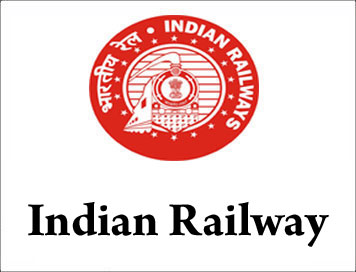(News) Indian Railways : High Speed Travel, Low Cost Solution
High Speed Travel in Indian Railways - A Low Cost Solution
Indian Railways has played a significant role in the development of India since its inception in 1853. Indian Railways today has the largest passenger operation amongst all Railways in the world carrying over 23 million passengers every day or about seven billion passengers annually which is equivalent to the world’s population. The focus has been to provide a safe and affordable means of transport to the teeming millions.
On the speed front trains still run at 110 kilometres per hour. Indian Railways had attained speeds of 120 kmph on its Mumbai and Kolkatta Rajdhani express trains way back in 1973. Ever since progress has been slow and since 2006 the Bhopal Shatabdi has achieved a speed of 150 kmph for a short spell. In order to meet the aspirations of the public for faster trains so as to reduce the journey times, there is a need to enhance the speeds to 160 kmph in the interim and up to 200 kmph ultimately on the existing track. Achieving higher speeds require extensive induction of new and innovative technology that enables a fast reliable and cost effective service with low carbon foot prints.
Countries like, China, France, Germany, Italy, Taiwan, Turkey, South Korea and Spain have developed high-speed rail to connect their major cities. The maximum commercial speed on most of these high-speed rail lines is 250 to 300 kmph. The first such high speed rail system began operations in Japan way back in 1964 and was widely known as the bullet train. China, today, has the world's longest high-speed rail network with 8,358 km of tracks. The network is still rapidly expanding to create a National High Speed Rail Grid by 2015.
Higher speeds require a dedicated track with fencing and can be prohibitively costly. For a country like India track fencing also has its own set of associated issues. Thus, leveraging Rolling stock technologies may provide a lower cost solution to meet the immediate needs of achieving speeds of 160 to 200 kmph, and that too on the existing track. For speeds above 200 kmph the costlier and time consuming solution of providing a separate dedicated track with fencing becomes inescapable. In this context the Institute of Rolling Stock Engineers with the assistance of Indian Railways and also of RITES, a public sector undertaking under the Ministry of Railways, organized the high speed travel-low cost solutions International conference in New Delhi on 29th and 30th October 2013. The conference was inaugurated by the Railway Minister, Shri Mallikarjun Kharge. The conference was co-chaired by the ‘Institute of Mechanical Engineers’, London. The focus of this conference was to consider achieving higher speed trains in the range of 160 to 200 kmph with marginal inputs in the existing infrastructure.
The themes of the conference included World overview of High Speed technologies, High speed Bogie Technologies, Importance of Train Dynamics for high speed operation, Wheel sets for high speed operation, Lightweight coach Technologies, Track & infrastructure, Signalling technologies, Traction related issues, brake systems, Crashworthiness and Manufacturing and maintenance aspects specific to High Speed operation. A total of 49 papers were presented which included 25 by authors from Germany, Spain, Australia, USA, UK, Japan, France, South Africa, Switzerland, Italy and China. Major high speed rolling stock manufactures like Bombardier, Talgo, CAF, Alstom and Siemens, participated in the conference and shared their knowledge in high speed technology as well as experience in various parts of the world in providing low cost solutions. . Spanish National railway RENFE, the biggest high speed train operator in Europe, shared their experience in running high speed trains. The conference was also attended by policy makers, senior administrators, research institutions, consultants and industry professionals from India and abroad. This provided networking opportunities for railway officials as well as other stakeholders.
On this occasion the Railway Minister launched the High Speed Rail Authority, a subsidiary of RVNL, as a first step in making the high speed dream a reality. This is even relevant as Indian Railways proposes to establish a high speed network on six routes for which studies are being conducted by the French and the Japanese. As they say once begun is half done and the day is not far when Indian Railways will have trains running at 160-200 kmph in the country
Courtesy : PIB
